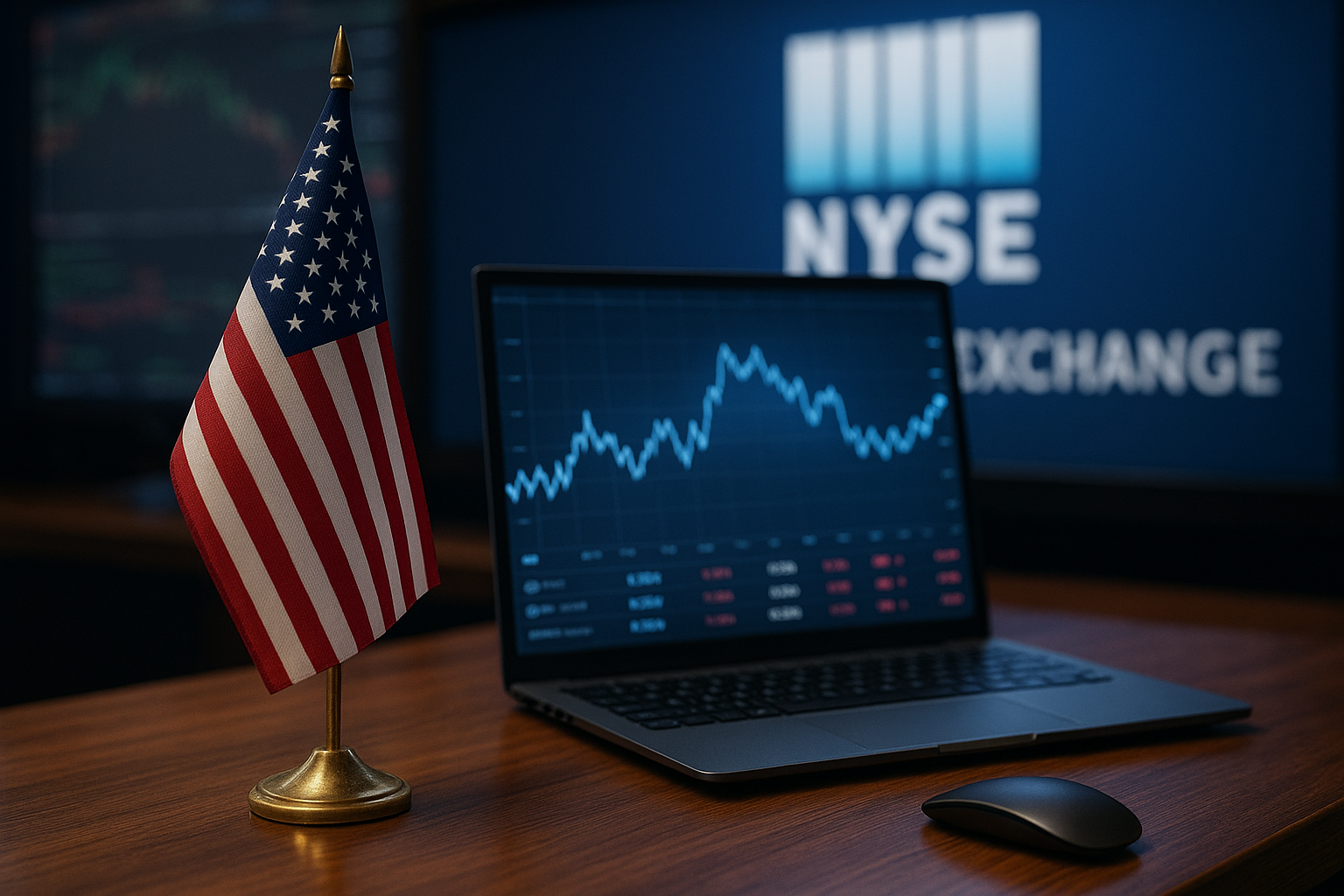After weeks of tech-fueled euphoria, Wall Street is taking a collective breath. Nvidia’s historic climb past a $4 trillion valuation sent shockwaves through the market—yet futures on the S&P 500 and Nasdaq 100 pulled back as renewed trade tensions and upcoming economic data reintroduced caution into the rally.
Investors now find themselves at a critical inflection point. The AI boom continues to drive equity performance, but tariff rhetoric and key macroeconomic data releases threaten to shake the market’s confidence in the second half of 2025.
Nvidia’s $4 Trillion Moment: A Double-Edged Signal
The recent surge in Nvidia (NASDAQ: NVDA), which briefly pushed its market capitalization over $4 trillion, marks a historic milestone for both the company and the broader tech sector. It now sits in rarefied air alongside Apple and Microsoft, whose valuations continue to reflect the massive capital rotation into artificial intelligence infrastructure and services.
According to data from Bloomberg, Nvidia’s data center revenue has skyrocketed more than 400% year-over-year, fueled by strong demand for its AI chips across hyperscalers and cloud providers. That explosive growth helped lift the Nasdaq to record highs and pulled the S&P 500 into new territory as well.
However, while Nvidia’s ascent underscores investor enthusiasm for AI, it has also triggered broader concerns about market concentration and stretched valuations. The so-called “Magnificent Seven” now comprise over 35% of the S&P 500’s total market cap—a level of sector dominance that invites scrutiny and risk.
Tariffs and Trade Tensions Disrupt the Narrative
On Tuesday, sentiment turned more cautious after former President Donald Trump announced a proposed 50% tariff on imported copper, citing national security concerns. Copper futures surged, while traders began to reassess the broader implications for trade policy, inflation, and supply chain risk.
The copper tariff is especially relevant to tech and infrastructure investors. Copper is a critical input in AI data centers, EVs, and semiconductor fabrication, meaning the policy shift could raise input costs and strain margins for high-growth tech firms.
Moreover, additional reports suggest that Trump’s trade team is reviewing expanded tariffs on pharmaceuticals, Brazilian imports, and certain tech components, a sign that election-year policy volatility is returning to the forefront.
According to Reuters, markets are increasingly sensitive to signals from both camps as election rhetoric heats up, especially on themes of trade protectionism and reshoring industrial capacity.
Macroeconomic Data Now in Focus
Investors are also bracing for a string of key economic releases, including:
- U.S. CPI inflation report (due Thursday)
- Weekly jobless claims
- Producer Price Index (PPI)
- FOMC minutes from the last Federal Reserve meeting
Any sign of stickier-than-expected inflation or weaker labor market data could tilt expectations for the Fed’s next move. As of this week, Fed fund futures (via CME FedWatch Tool) suggest markets are pricing in a 51% probability of a rate cut by September, but that outlook remains highly sensitive to incoming data.
The risk? A misalignment between market optimism and Fed messaging could introduce volatility—especially given how dependent the recent rally has been on accommodative policy expectations.
Why This Matters for Investors
The confluence of events—a trillion-dollar tech rally, escalating tariff threats, and high-stakes economic data—creates both opportunity and fragility in today’s market. Investors are now navigating:
- AI-driven growth tailwinds, which continue to reward long-duration tech bets
- Trade-related cost pressures, which may impact input-heavy sectors like semiconductors, EVs, and infrastructure
- Monetary policy uncertainty, as inflation prints remain uneven and Fed signals shift with each release
As Morgan Stanley strategist Michael Wilson noted this week, “The market is priced for a perfect landing, but the turbulence isn’t over.” That sentiment echoes across the Street, where portfolio managers are increasingly looking to balance high-growth exposure with defensive positioning.
Key Investment Insight
Investors should remain selective amid the euphoria. AI and tech remain the dominant growth stories, but geopolitical headlines and macro data could act as pressure valves in the coming weeks.
Actionable strategies include:
- Maintaining exposure to leading AI infrastructure players like Nvidia, but trimming at stretched technical levels.
- Rotating partially into dividend-paying defensive sectors, such as healthcare and utilities, to hedge policy volatility.
- Monitoring copper and rare-earth commodity ETFs, which could benefit from tariff-fueled price action.
- Watching forward earnings guidance from companies in tech, autos, and construction for inflationary impact signals.
Stay ahead of the curve with MoneyNews.Today—your trusted source for daily market intelligence, global investor trends, and analysis that helps you navigate the noise.





